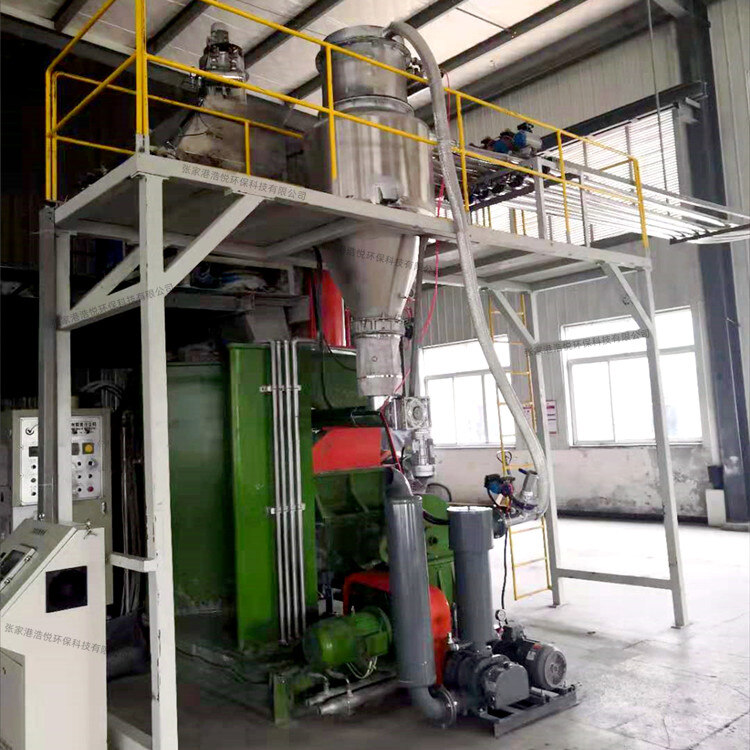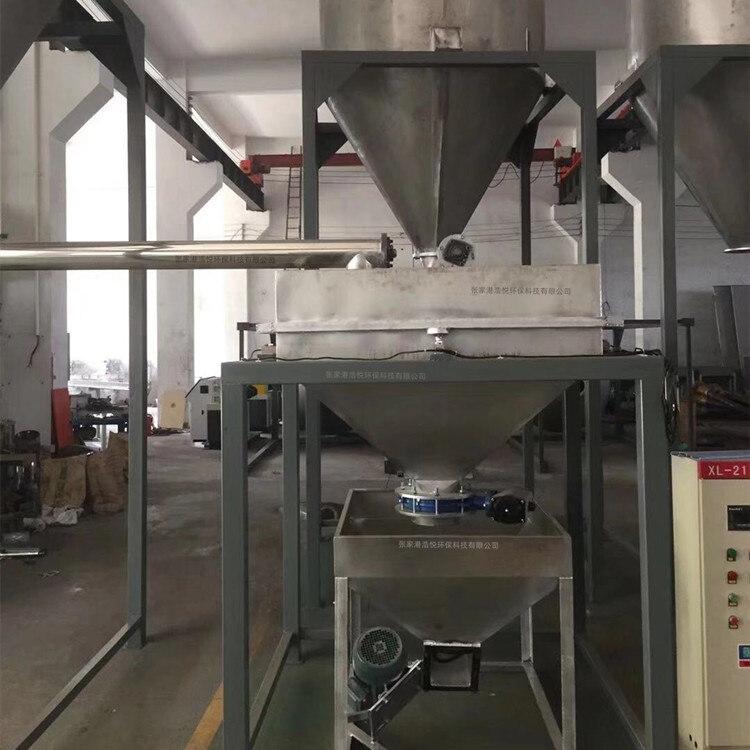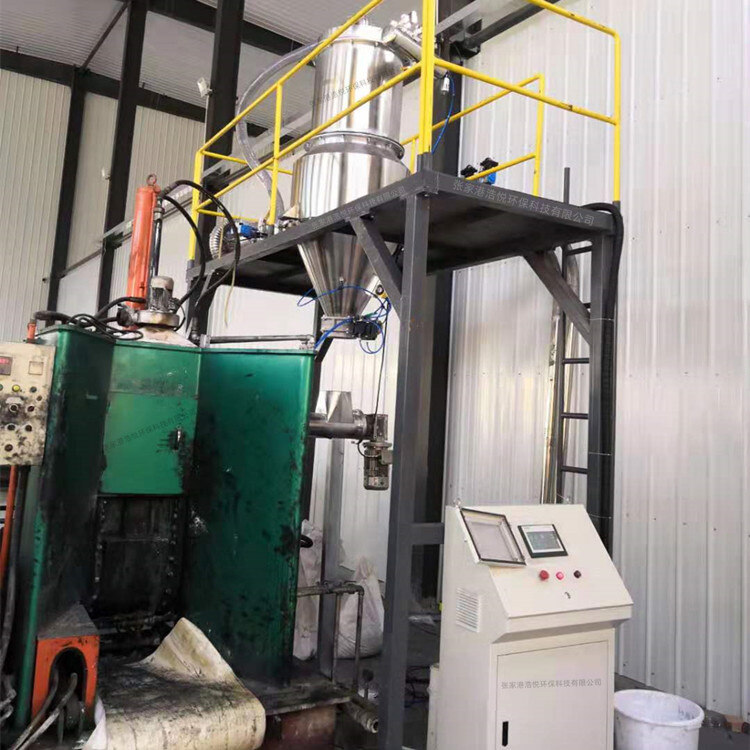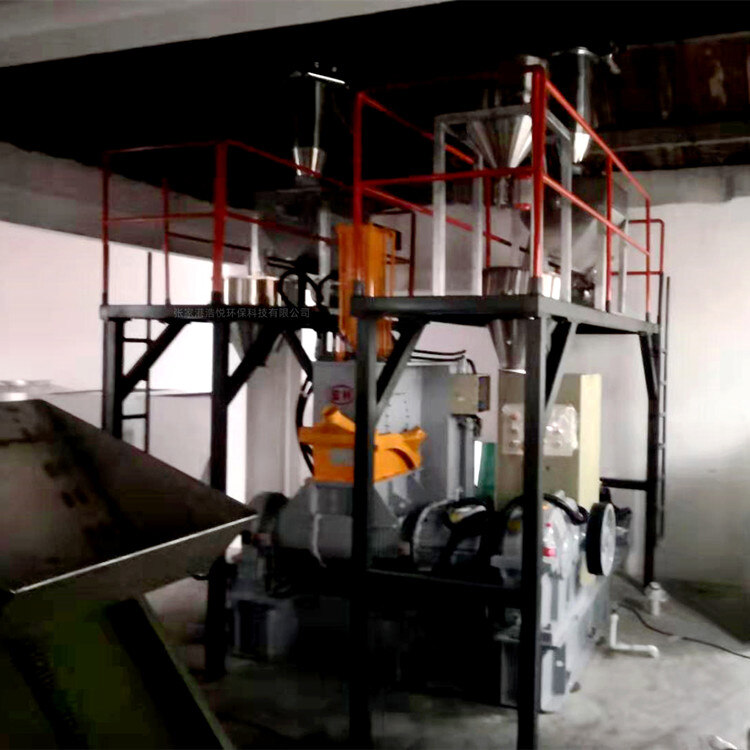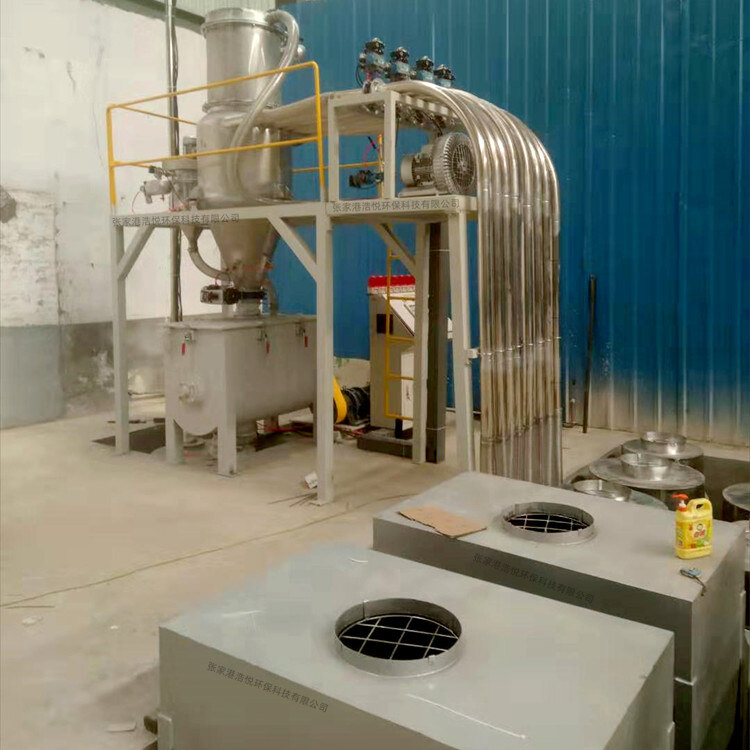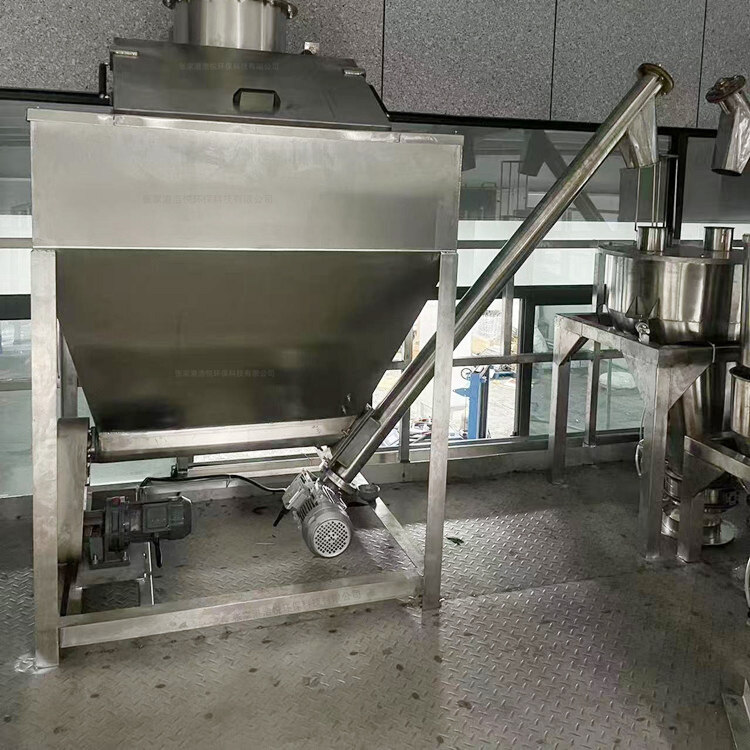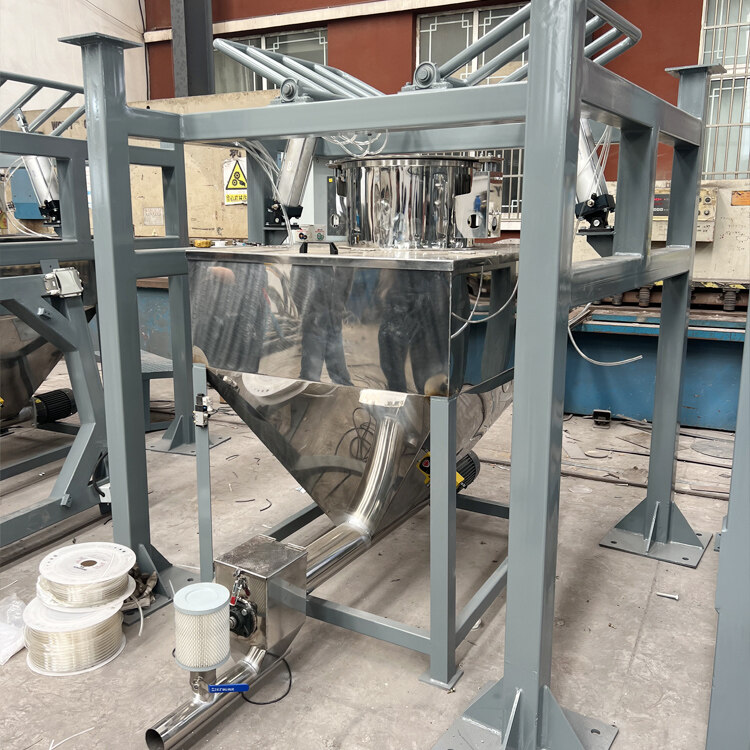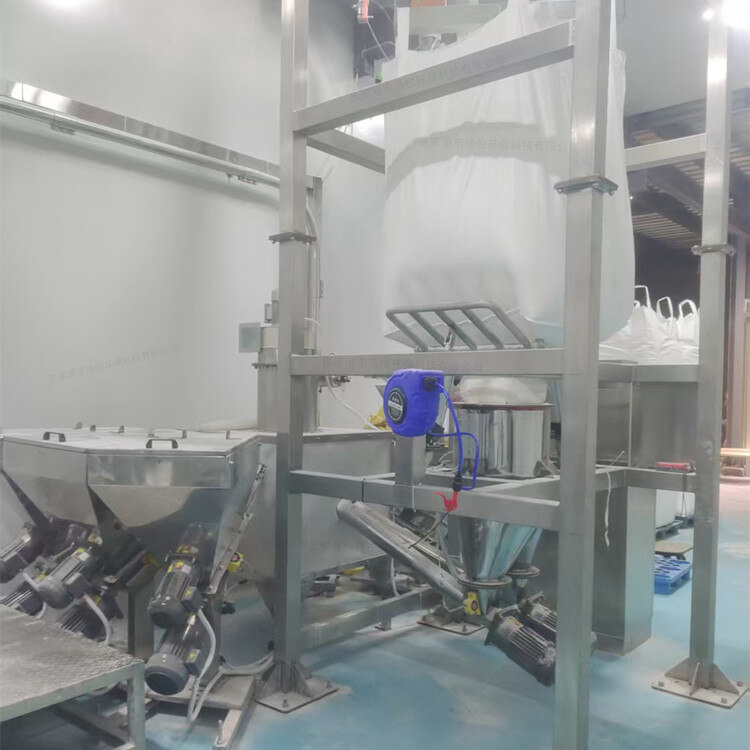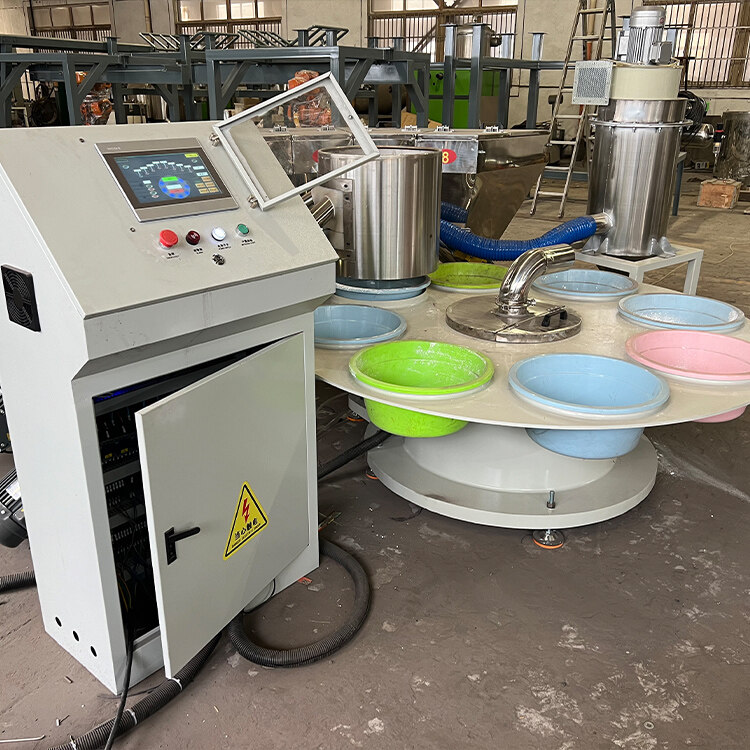- Introduction to automatic batching machine and fully automatic batching machine equipment
- The powder metering system tells you about the introduction of the mixing and drying machine
- 1000kg vacuum feeding machine
- Fully automatic small material batching system
- Research on Innovation of Automatic Weighing Machine Technology
- Design and operation of automatic batching system using PLC, industrial computer and frequency converter
Automatic metering system matched with mixing machine
- Category:Batching Plant
- Hits:151次
- Release Date:2025-06-23
- Share:
- Inquiry
- Details
The quality of the rubber material mixed by the internal mixer depends not only on the feeding sequence, but also on the mixing temperature, feeding capacity, rotor speed, mixing time, top bolt pressure, and rotor type.
Loading capacity of internal mixer
Insufficient mixing capacity can reduce the shear and kneading effects on the rubber material, and even lead to slipping of the rubber material and rotor idling, resulting in poor mixing effect. On the contrary, if the capacity is too large, it will make it difficult to flip the rubber material, resulting in improper positioning of the top bolt, causing some of the rubber material to stagnate at the feeding port neck, resulting in uneven mixing of the rubber material, long mixing time, and easy equipment overload and high energy consumption. Therefore, the mixing capacity should be appropriate, usually taking 60% to 70% of the total effective volume of the sealed chamber. The loading capacity of the internal mixer during mixing can be calculated using the following empirical formula:
Q - loading capacity, Kg;
K - Fill factor, usually taken as 0.6~07;
V - The total effective volume of the sealed chamber, L;
ρ - density of the adhesive material, g/cm3。
The selection and determination of filling factor K should be based on the type and formula characteristics of the raw rubber, equipment features and wear degree, and top bolt pressure. For formulas with high NR and gel content, K should be appropriately increased; For synthetic adhesives and formulations with low adhesive content, K should be appropriately reduced; For old equipment with high wear and tear, K should be increased; New equipment should be smaller; The K value of the meshing type rotor mixer should be smaller than that of the shearing type rotor mixer; As the pressure on the top bolt increases, K should also increase accordingly. In addition, the K of the inverse mixing method must be as large as possible.
Feeding sequence of internal mixer
In the mixing process of the internal mixer, the order of adding raw rubber, carbon black, and liquid softener, as well as the mixing time, are particularly important. Generally, raw rubber is added first, followed by carbon black, and the liquid softener is added after the carbon black is basically dispersed in the rubber material. This is beneficial for mixing, improves the mixing effect, and shortens the mixing time. Adding liquid softeners too early or too late is detrimental to mixing, causing uneven dispersion, prolonged mixing time, and increased energy consumption. The addition time of liquid softener can be determined by the distribution coefficient K. Sulfur and overspeed accelerators are usually added in the later stages of mixing or discharged onto a tablet press to reduce the risk of burning. Small drugs (solid softeners, activators, accelerators, anti-aging agents, anti coking agents, etc.) are usually added after rubber production and before carbon black.
Top bolt pressure on the mixer
During the mixing process of the internal mixer, the rubber material must be subjected to a certain pressure from the top plug. It is generally believed that a top plug pressure of 0.6-0.8MPa is appropriate. When the rotor speed is constant, further increasing the pressure effect is not significant. When the mixing capacity is insufficient, the pressure of the top plug cannot be fully exerted. Increasing the pressure of the top bolt can reduce the unfilled space in the sealed chamber, increasing its filling degree by about 10%. As the capacity and speed increase, the pressure of the top bolt must be increased.
Increasing the pressure of the top plug will accelerate the heat generation of the rubber material during the mixing process and increase the power consumption during mixing.
Structure and type of internal mixer rotor
The geometric shape and size of the rotor working surface largely determine the production capacity and mixing quality of the internal mixer. There are two basic configurations of internal mixer rotors: shear type rotors and meshing type rotors. Generally speaking, the production efficiency of the shear type rotor mixer is high, and it can quickly add materials, mix quickly, and discharge quickly. The meshing rotor mixer has the characteristics of high dispersion efficiency and low heat generation rate, and is suitable for manufacturing hard rubber materials and primary mixing. The dispersion and homogenization effect of the meshing rotor mixer is better than that of the shearing rotor mixer, and the mixing time can be shortened by 30-50%.
Internal mixer speed
Improving the speed of the mixer rotor is one of the more effective measures to enhance the mixing process. Doubling the speed shortens the mixing cycle by approximately 30% to 50%. Increasing the rotational speed will accelerate heat generation, resulting in a decrease in the viscosity of the rubber material and a reduction in the mechanical shear effect, which is not conducive to dispersion.
Mixing temperature of internal mixer
A high mixing temperature is beneficial for the plastic flow and deformation of raw rubber and rubber materials, as well as for the wetting and mixing of the surface of solid compounding agent particles by rubber. However, it also reduces the viscosity of the rubber materials, which is not conducive to the crushing and dispersion mixing of compounding agent particles. Excessive mixing temperature can accelerate the thermal oxidative aging of rubber, leading to a decrease in the physical and mechanical properties of vulcanized rubber, i.e., the phenomenon of over mixing; It can also cause the rubber material to burn, so effective cooling measures must be taken during the mixing process of the internal mixer; But the temperature cannot be too low, otherwise there will be a phenomenon of rubber material dispersion.
Mixing time of internal mixer
The mixing time required for using an internal mixer to mix rubber materials under the same conditions is much shorter than that of an open mixer. When the mixing quality requirement is certain, the required mixing time decreases with the increase of the internal mixer speed and the pressure of the top plug. Improper feeding sequence and unreasonable mixing operation will prolong the mixing time.
Extending the mixing time can improve the dispersion of the compounding agent in the rubber material, but it can also reduce production efficiency. Long mixing time can easily cause over mixing of the rubber material, resulting in damage to the physical and mechanical properties of the vulcanized rubber. It can also cause an increase in the "thermal history" of the rubber material, which can lead to burning. Therefore, the mixing time of the rubber material should be shortened as much as possible.


